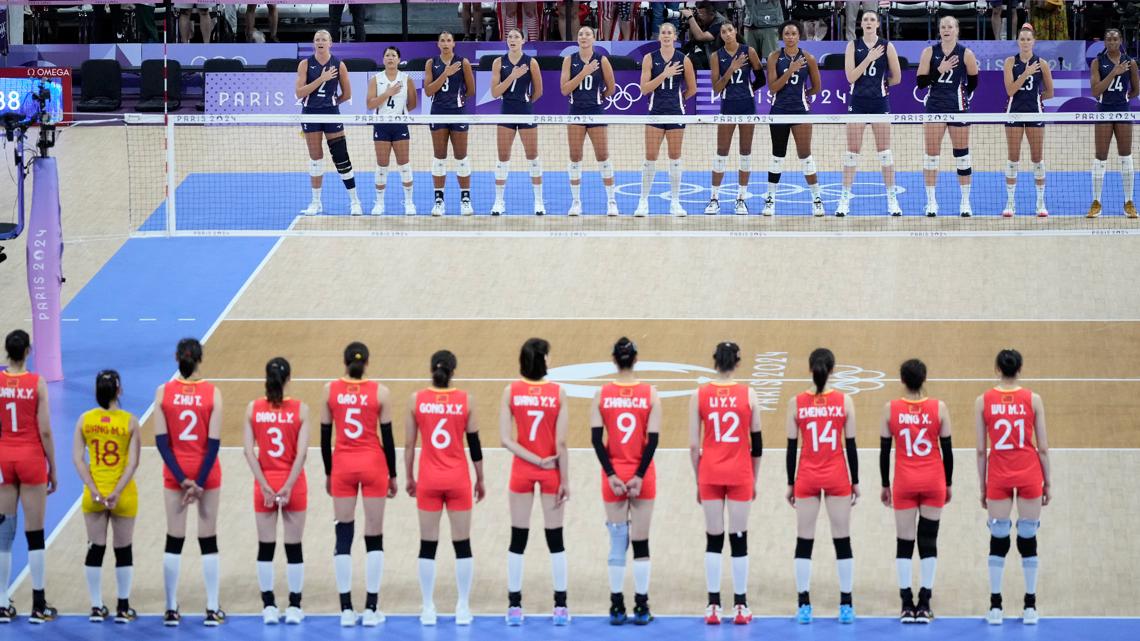The player in a different color jersey is called a libero, a position that has different rules than the rest of the team.


WASHINGTON — Both disciplines of volleyball are now underway at the 2024 Paris Olympics.
Those who tuned into Team USA's match against China may have noticed one person on each team's 12-player roster who sport different jerseys than the rest of the team. Who are they?
That person is a defensive specialist known as a "libero." They’re only allowed to play in the back row of the volleyball court and can’t serve, spike the ball over the net or move into a front-row position.
The different color jersey helps referees easily spot them to enforce the unique rules of that position. The libero position was introduced by the International Volleyball Federation (FIVB), the organization that governs Olympic volleyball, after the 1996 Games.


While the basic rules of volleyball and beach volleyball are the same, there are some key differences.
Volleyball, which made its Olympic debut in 1964, has six people playing at once for each team, is held indoors and has a larger court.
While beach volleyball is played on sand, features a smaller court and only two players on each team. There are also no substitutions.
In both sports, each team can hit the ball up to three times before it must make it over the net.
A six-person volleyball match is a best of five set contest, while beach volleyball is the best of three sets.
The balls used in beach volleyball are also a little different. They are filled with 30% less air pressure than indoor volleyball, which make them move more slowly. Beach volleyball made its Olympic debut at the Atlanta 1996 Games after appearing as a demo sports in 1992.
How fast are volleyball serves?
According to Olympic organizers, the ball can reach speeds up to 80 miles per hour during a game of volleyball, particularly during a jump serve or smash. That's another reason why athletes need such fast reflexes to respond.
.png)









 English (US) ·
English (US) ·